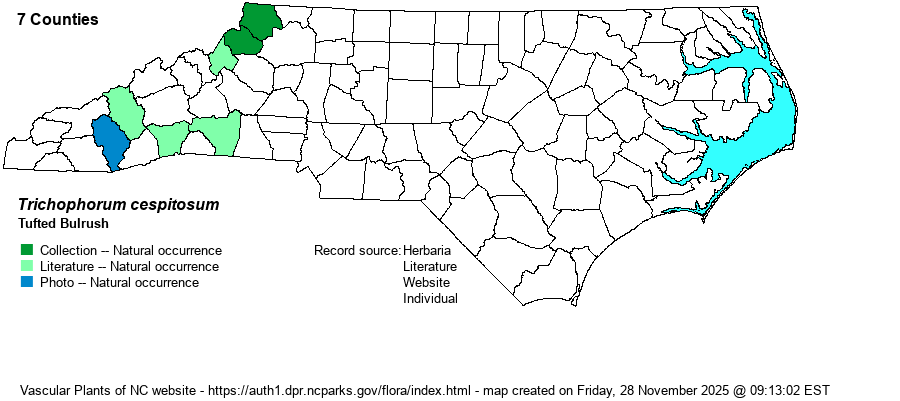| Author | (L.) Hartman | |
| Distribution | Mountains only, mostly at high elevations.
Circumboreal, in North America south to New England, NY, IL, and OR; disjunct to the Appalachians of NC, TN, SC, and GA. | |
| Abundance | Uncommon; but where found, however, plants may be abundant. In fact, the NCNHP database has 41 records, most still extant, and about 12 in excellent condition. This is a Significantly Rare species; were it not strongly disjunct to the Southern Appalachians -- it is not known from PA, MD, WV, or VA -- the species would likely only be on the Watch List. | |
| Habitat | High elevation cliffs, rock faces, exposed summits, often where there is some seepage. These habitats are somewhat restricted in acreage, but the species does turn up regularly in NC in these small patches of habitat. |
| Phenology | Flowering and fruiting July-September. | |
| Identification | This species forms dense clumps. The flowering stems are numerous, generally circular in cross-section, and reach 1.5 feet long; the leaves are inconspicuous and very short (less than half an inch). The compact inflorescence is composed of 3-9 small spikelets and resembles that of many spikerushes (genus Eleocharis). | |
| Taxonomic Comments | Named as Scirpus cespitosus var. callosus in RAB (1968).
The genus Trichophorum has been split out from Scirpus, due to the lack of an involucre (leaf-like bracts at the base of the inflorescence). It also has a solitary spikelet, versus almost always multiple. | |
| Other Common Name(s) | Tufted Clubsedge, Deergrass (a very misleading name) | |
| State Rank | S2S3 | |
| Global Rank | G5 | |
| State Status | SR-D | |
| US Status | | |
| USACE-agcp | | |
| USACE-emp | | |

